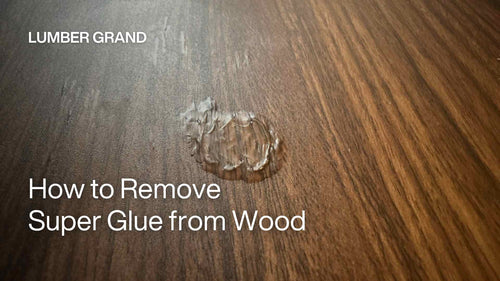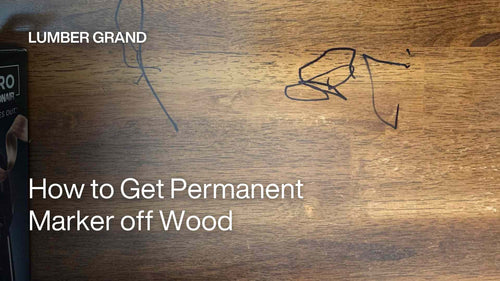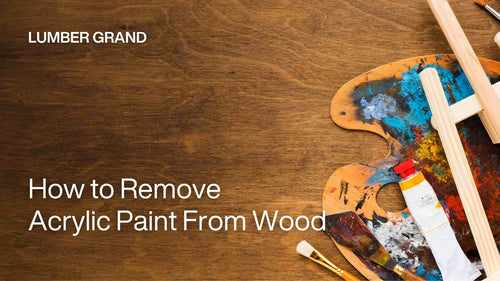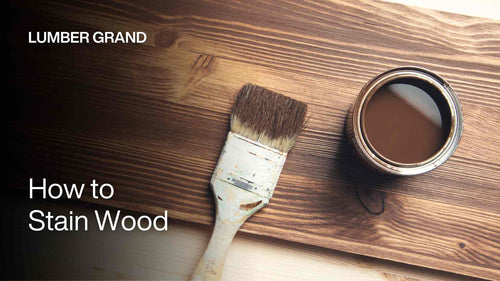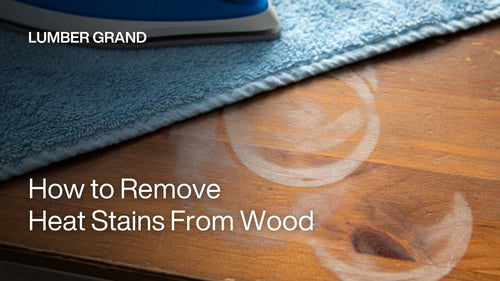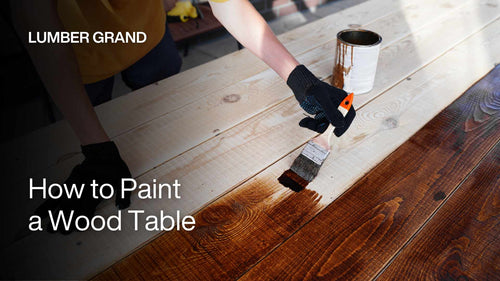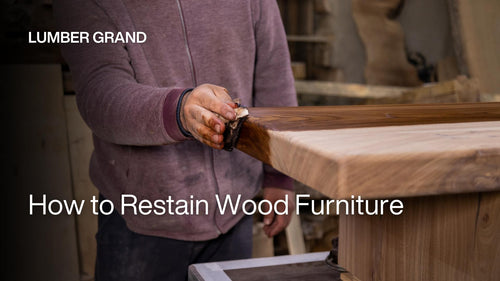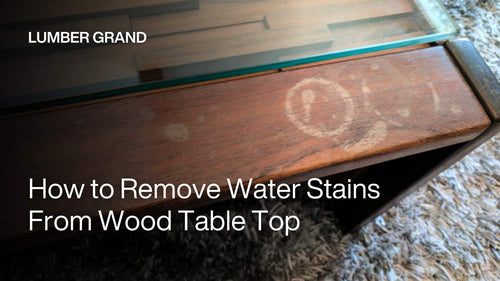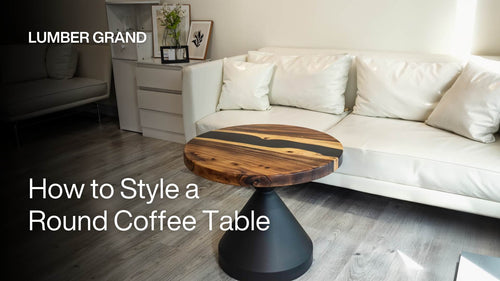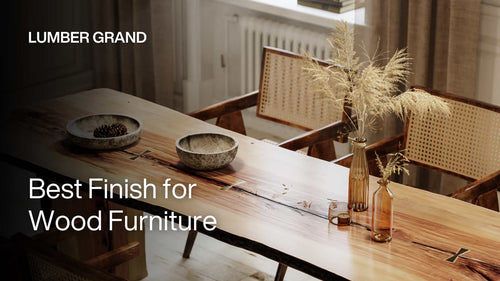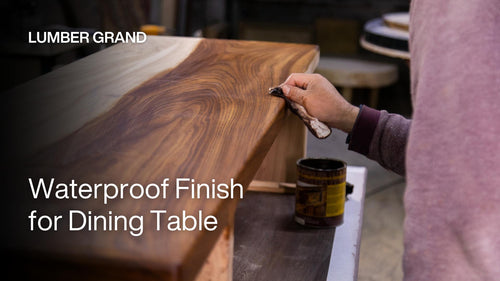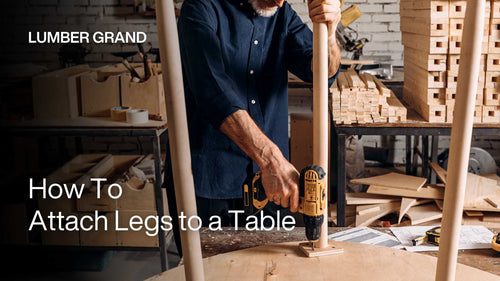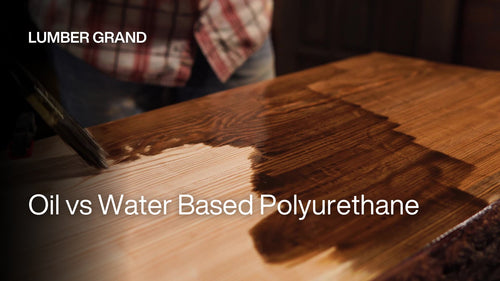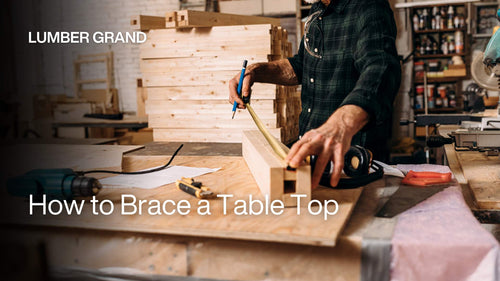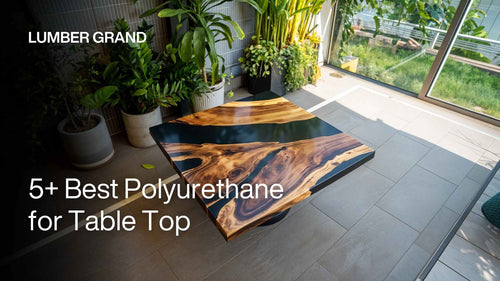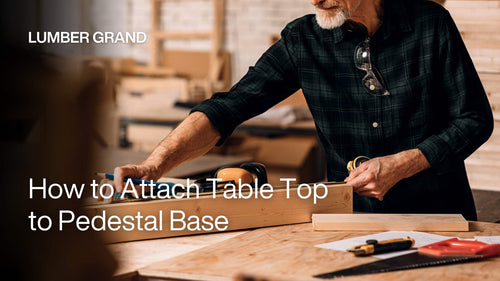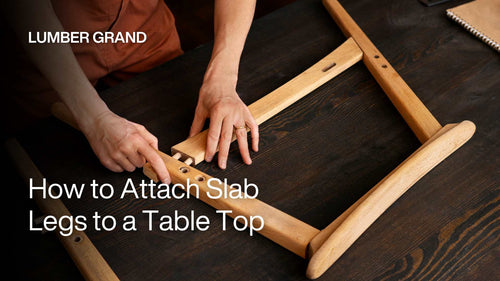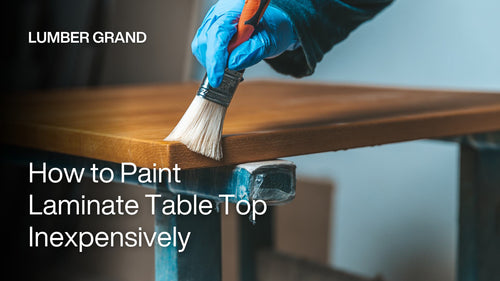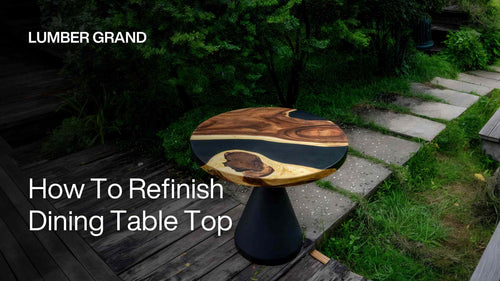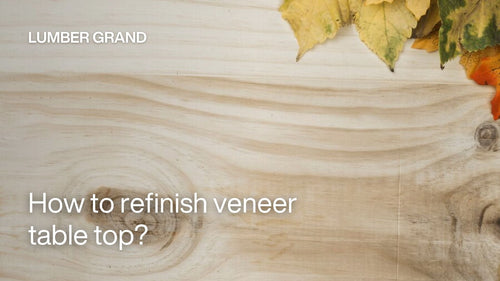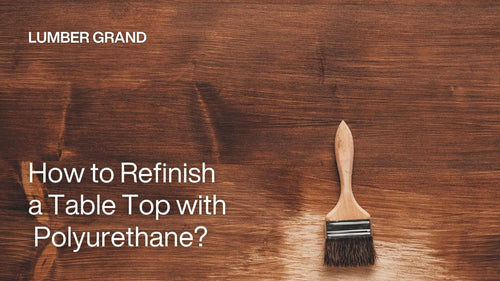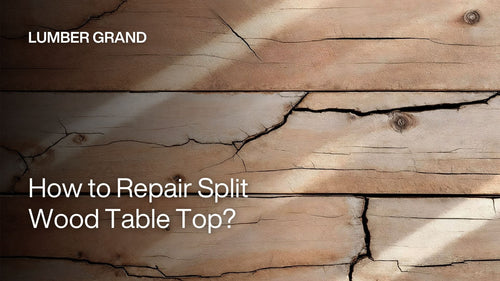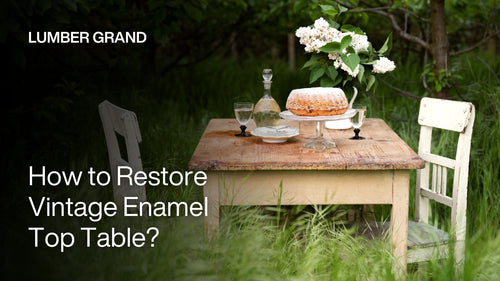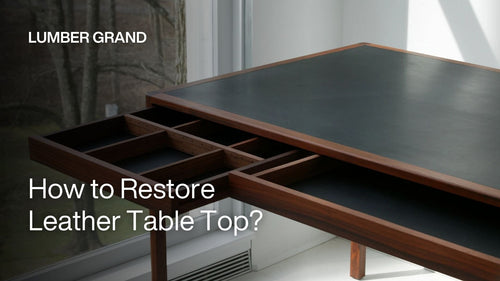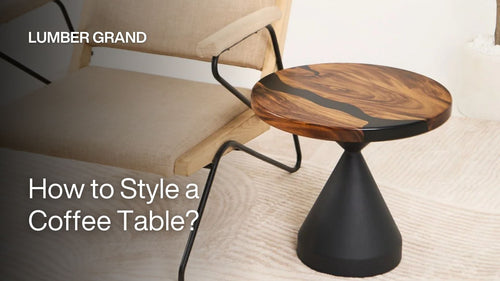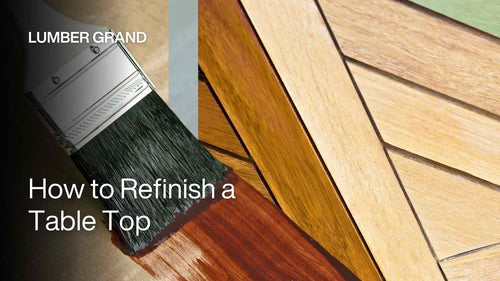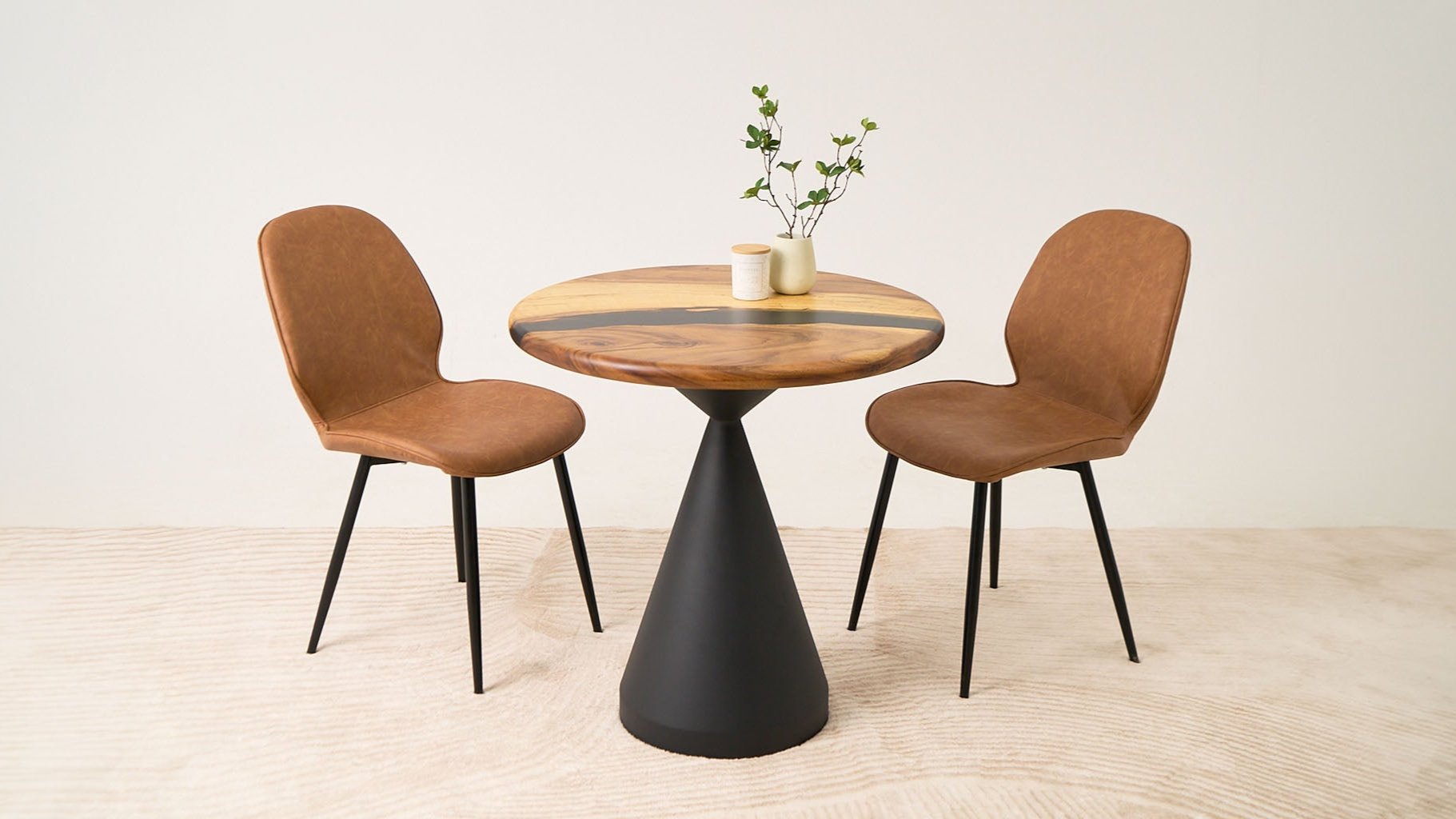How to refinish dining table top might sound scary, but it's really not that hard. Even if you're a beginner and have never done anything like this before, you can handle it with some patience and the right steps.
The basic process is pretty straightforward. Strip off the old finish, apply new stain to get the color you want, then add a protective coat to keep it looking good for years.
This is a great weekend project that can save you a lot of money. Professional refinishing costs hundreds of dollars, but refinishing dining table yourself costs a fraction of that and gives you the satisfaction of bringing your table back to life. Read more!
How to Refinish Dining Table Top: Sand, Stain More in 7 Steps
Your dining table top coating has seen better days. Water rings from coffee mugs, scratches from daily use, and that dull finish that makes the whole room look tired.
You can bring it back to life without spending a fortune on professional refinishing. We've broken down the whole process into 7 straightforward steps that anyone can handle. Let's go!
Step 1: Prepare Materials and Tools to Refinish Kitchen Table
We start the process by gathering everything you need before you start. Nothing's worse than being halfway through stripping your table and realizing you don't have the right sandpaper or stain.
Besides, Lumber Grand recommends you check what kind of finish is already on your dining kitchen table. This matters because different finishes need different strippers.
-
If your dining table top has a clear stain, you might be able to skip the stripper and go straight to sanding.
-
But if it's painted or has a thick varnish, you'll definitely need chemical stripper.
-
Take time to choose your stain color carefully. You should remember that stain enhances the wood's natural color rather than covering it completely. Therefore, the final result will blend your chosen stain with the wood's original tone. When in doubt, you can test the stain on an inconspicuous area first.
Essential tools:
-
Chemical stripper and wide putty knife (for painted or heavily varnished tables)
-
Oil-based wood stain in your preferred color
-
Oil-based polyurethane or tung oil for the final protective coat
-
Sandpaper in three grits: 100, 150, and 220
-
Fine steel wool for detail work
-
Disposable stain brushes (foam brushes work great too)
-
Clean cotton rags (old t-shirts work perfectly)
-
Tack cloth for dust removal
-
Mineral spirits for cleanup
Safety gear (Don't skip this):
-
Chemical-resistant rubber gloves
-
Long-sleeve shirt or coveralls
-
Safety goggles or glasses
-
Dust mask or respirator
Optional but helpful:
-
Orbital or belt sander (saves time on refinish large dining table top)
Budget breakdown:
-
Orbital Sander: $30 (You can borrow it from your neighbor instead)
-
Wood Stain: $9
-
Polyurethane: $16
-
Stain Brushes: $13
-
Sandpaper: $5
-
Tack Cloth: $3
-
Mineral spirits: $8
Step 2: Clean the Dining Table Top
Before you do anything else, give your dining table a good cleaning. We mix up some warm water with a little dish soap and wipe down the whole dining table with a soft cloth. Pay attention to the edges and any grooves where sticky stuff likes to hide.
My grandmother's old table had 20 years of Sunday dinner residue built up around the edges, and I had to scrub pretty good to get it all off.

How to refinish kitchen table
Photo: Freepik
Please don't use anything harsh like bleach or those abrasive cleaning pads. You might damage what's left of the finish. Plain old dish soap works just fine.
When you're done, simply wipe it down with a damp cloth to get rid of the soap, then let it dry for about 30 minutes.
Step 3: Strip Old Finish on Dining Table Top
As mentioned above, if your dining room table has paint or thick varnish, you'll need to strip it off before sanding. This step takes some patience, but doing it right makes everything else easier.
1. Set up safely first: Refinish kitchen table top outside if you can, or at least in the garage with the door wide open. The stripper smells pretty strong, and you don't want to breathe it in.
Put on those rubber gloves, safety glasses, and a long-sleeved shirt before you even open the stripper can.
2. Apply the stripper: Brush the stripper on thick, like you're frosting a cake. You should work on about a 2-foot section at a time instead of trying to do the whole table at once.
The instructions on the can will tell you how long to wait, but it's usually about 10 — 15 minutes. You'll see the old finish start bubbling and wrinkling when it's ready.
3. Scrape off the old finish: Next, we use a putty knife almost flat against the table and scrape with the wood grain, not against it. Keep a rag handy to wipe the gunk off your knife between scrapes.
Some spots might be stubborn and need a second coat of stripper, and that's normal. When you're done scraping, go over everything with fine steel wool to catch any bits you missed.

How to refinish a table top
Photo: AboutLawsuits
You might like: How to Refinish a Veneer Table Top
Step 4: Clean the Kitchen Table With Mineral Spirits
After all that stripping, there's still some chemical residue left on the wood that needs to come off. If you skip one of the steps of how to refinish dining table top, your new stain won't stick properly, and you'll end up with a blotchy mess.
-
Soak a clean rag with mineral spirits and wipe down the whole table. You might be surprised how much gunk still comes off. When your rag gets dirty, you can switch to a fresh one.
-
We let the dining table top dry for about an hour before moving on. You'll know it's ready when you touch it and it doesn't feel sticky anymore, and the chemical smell is mostly gone.

Soak a clean rag with mineral spirits and wipe down the whole table
Photo: Freepik
Step 5: Sand the Kitchen Table Top
Now comes the dining table top sanding. This is where your dining table really starts coming back to life. We first take the roughest sandpaper(100-grit) to get rid of any leftover finish and smooth out rough spots.
1. Sand with the grain: Always sand in the same direction as the wood grain. You can see which way the lines in the wood run if you look closely.
If you sand across the grain, you'll leave scratches that show up badly once you stain. Use long, smooth strokes, and please don't press too hard.
2. Sand your way up: After you've gone over everything with 100-grit, switch to 150-grit to make it smoother. Then you finish with 220-grit for that final smooth feel.
3. Clean dining table top between sanding steps: Every time you switch to a finer sandpaper, and especially before you stain, you need to wipe everything on dining table top down with a tack cloth.

I'll cheat a little because I have an orbital sander in garage
Photo: Freepik
Step 6: Apply Stain on Table Top Dining
You can watch your refinishing dining table transform with color in step 6th. We stain soaks into the wood instead of just sitting on top like paint, so you need to work pretty quickly once you start.
-
How to put stain on dining table top: Use a foam brush or a disposable brush to slap on the stain, always going with the wood grain. Work on sections you can handle, maybe a quarter of the table at a time. Put on enough stain so the wood looks wet all over.
-
Timing matters: Let the stain sit for a few minutes, then wipe off the extra with a cotton rag (old t-shirts work great). The trick is that the longer you leave it on before wiping, the darker it gets. So if you want it darker, wait a little longer. If you want it lighter, you should wipe it off sooner.
-
Repaint dining table top: Most tables need at least two coats to get that rich, even color you're after. Between coats, you should give it a light sanding with the finest sandpaper (220-grit) or some fine steel wool, then wipe it clean with the tack cloth.

You can watch your refinishing dining table transform with color when you apply stain
Photo: Freepik
We keep adding coats until you like the color. Remember, you can always make your dining table top darker, but it's really hard to make it lighter once it's on there.
Step 7: Apply the Last Finish for Dining Table Top
The last step of how to refinish dining table top is what protects all your hard work. For a dining table that's going to see spilled coffee, white rings, hot dishes, and daily use, you want something tough. Oil-based polyurethane is your best bet.
-
Putting on the oil-based polyurethane: We use a good brush or foam applicator and put it on thin, don't try to get it all done in one thick coat. Besides, you should go with the wood grain just like you did with the stain. Thin coats dry better and look smoother than thick ones.
-
Between coats: Let each coat dry completely, the can will tell you how long, but it's usually 4-6 hours. Before you put on the next coat, you should give it a light sanding with 220-grit paper, then wipe it clean. This helps the next coat stick better.
-
How many coats: Put on at least two coats, but three is even better for a table that gets a lot of use. After your final coat, don't use the table for a full day or two. I know it's tempting to put it right back in service, but letting it cure properly means it'll last much longer.
-
If you prefer tung oil: Some folks like tung oil instead because it gives a more natural look. It soaks deeper into the wood, and you can buff it to get just the shine you want. Moreover, tung oil takes more coats than polyurethane, but it's easier to touch up later if you get a scratch.
Once everything's dry and cured, your table is ready to go back to work. With good care, this finish should keep your table looking great for 5-10 years.

The last step of how to refinish dining table top is to protect dining table top after all your hard work
Photo: Freepik
What is the Best Finish for Dining Room Table?
The best finish for your dining room table really depends on how you use it and what look you're going for. Let us break down your options, so you can make the right choice for your kitchen dining table top.
1. Polyurethane — Best Finish for Long Lasting
For most families, polyurethane is your best bet. It's like putting a tough, invisible shield on your dining table top that laughs at spilled wine, hot coffee mugs, and scratches from everyday use.
You've got two types to choose from:
-
Water-based polyurethane dries clear and doesn't smell as strongly
-
On the other hand, oil-based polyurethane gives your wood a warm, amber glow and lasts even longer. If you've got kids or do a lot of entertaining, this is probably what you want.
2. Epoxy Resin — Best Finish for Real Beating
If your table takes a real beating, maybe you've got teenagers who do homework right on the table, or you use it for crafts and cooking projects, then epoxy resin might be worth considering. This best finish for epoxy dining table can create a super-thick, glossy finish that's practically bulletproof against heat, scratches, and spills.

Epoxy resin is one of the best finishes for dining table top
Credit: Lumber Grand
Shop now: Square Epoxy Dining Table Top 41" x 41"
3. Tung Oil or Linseed Oil — Best Finish for Natural Look
Suppose you love the natural wood look? Oil finishes like tung oil or linseed oil soak right into the wood and make the grain pop beautifully. Your table will feel smooth and natural to the touch, not like it's covered in plastic. The catch is you'll need to reapply the oil every year or so, and it won't protect as well against water rings and scratches.
4. Wax
For lighter use tables, maybe in a formal dining room that only gets used for special occasions. Wax finishes like beeswax give you a lovely, soft shine and feel completely natural. But honestly, they don't protect much against everyday mishaps, so they're really only good if your table is more for show than daily use.
Our final honest advice: Unless you have a specific reason to go with something else, you should stick with polyurethane. It's proven, it's reliable, and it'll keep your table looking good for years without much fuss.
Why Should You Refinish Dining Table Top?
Refinishing a dining table isn't exactly how most people want to spend their weekend. But here's why it's actually one of the smartest things you can do for your home and your wallet.
1. Get a Dining Table Top Magazine-Perfect Look
Your table will look absolutely amazing. We’re talking about that rich, deep color and smooth finish that makes people run their hands across the surface just because it feels so good. You know those gorgeous tables you see in magazines? That's what yours can look like. All those scratches, water rings, and worn spots disappear, and you're left with what looks like a brand-new piece of furniture.
2. Refinishing Dining Table Top Protects Your Investment for Years
Restoring dining table top is actually good for the wood. Wood is a living material, and over time it dries out and can start to crack or split. A fresh finish feeds the wood and protects it from moisture, heat, and daily wear. You can think of it like moisturizer for your table, and it keeps the wood healthy and prevents bigger problems down the road.
3. Refinishing Kitchen Table Creates Your Perfect Style
Are you tired of that orange-y oak finish from the 90s? And you really want something darker and more modern? Or maybe you want to bring out the natural grain that's been hiding under layers of old stain. When you refinish dining table or even coffee table, you're in control of the final look. You’re free to match your current decor or completely change the style of your dining room.
Read more: How to Style a Coffee Table
4. Refinishing Table Dining Top Make You Feel Great About Your Handiwork
Yes, there's real satisfaction in doing it yourself. Not everyone loves DIY projects. But there's something special about taking a beat-up old dining table and bringing it back to life with your own hands. Every time you sit down for dinner, you'll feel proud knowing you saved that piece of furniture and made it beautiful again.
5. Refinishing Dining Table is Good for the Planet
Instead of throwing your old table in a landfill and buying something new, you're keeping good wood in use and avoiding all the resources that go into manufacturing and shipping new furniture. Your grandkids will appreciate you for that solid wood kitchen dining table that's still going strong decades from now.
FAQs
1. How to Restore Dining Table Top Finish?
Restoring your dining table top finish is easier than you might think. Here is how to refinish dining table top in 5 simple steps:
-
Step 1: First, give your table a good cleaning with warm, soapy water to remove any built-up grime.
-
Step 2: Next, you'll need to strip off the old finish using chemical stripper if it's painted or heavily varnished.
-
Step 3: After that, sand the surface starting with 100-grit sandpaper and working up to 220-grit for a smooth finish.
-
Step 4: Once it's clean and smooth, apply your chosen wood stain in thin, even coats, going with the grain.
-
Step 5: Finally, protect your hard work with 2-3 coats of polyurethane or tung oil. The whole process takes a weekend, but you'll have a table that looks brand new and will last for years.
2. Is it Better to Wax or Varnish a Table Top?
For a dining table that sees daily use, varnish (like polyurethane) is definitely your best choice.
-
Varnish creates a hard, protective shell that stands up to spilled coffee, hot dishes, and everyday wear and tear. It's also much easier to clean, you just wipe it down with a damp cloth.
-
Wax looks beautiful and feels natural, but it needs to be reapplied every few months and doesn't protect as well against water rings and scratches.
If you have an antique table that doesn't get much use, wax might be fine. But for a table where your family eats every day, you should go with varnish.
3. Can You Refinish just a Table Top?
Absolutely Yes! You can refinish just the table top without touching the legs or base. This is actually pretty common, especially when the table top shows more wear from daily use while the legs still look good.
4. Do You Have to Sand a Table Before Restaining?
Yes, you definitely need to sand before restaining, but how much depends on what you're starting with.
-
If your table has a clear finish that's in decent shape, you might get away with just a light sanding with 220-grit paper to rough up the surface so the new stain can grab hold.
-
But if there's old stain, paint, or a thick varnish, you'll need to strip that off first, then sand starting with coarser paper (100-grit) and work your way up to fine (220-grit).
Final Takeaways
Learning how to refinish dining table top is to create a centerpiece that your family will gather around for years to come. No matter if you're dealing with water rings, scratches, or just want a fresh new look, taking the time to restore your table is one of the best investments you can make in your home. More information on this and other DIY projects can be found on our blog at Lumber Grand for everything you need to know, from choosing the right materials to applying that perfect final coat. Moreover, you can contact Lumber Grand today to discuss your table refinishing project or explore our collection of 300+ handcrafted table top that bring warmth and character to any home. Thank you for reading!









